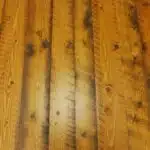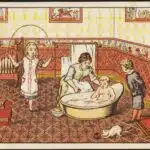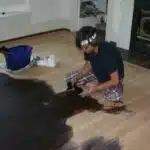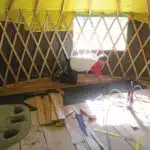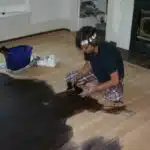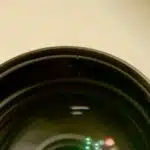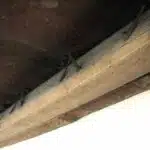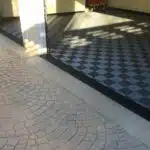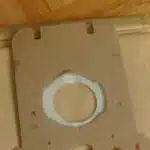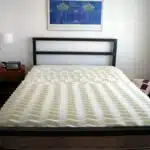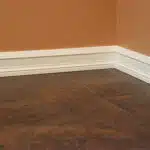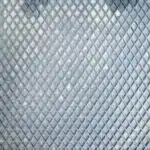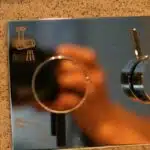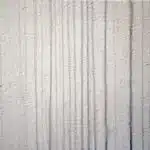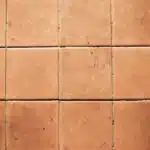As a cleaning expert, I understand the importance of maintaining a clean and tidy home. One of the most common household chores is washing floors, which can be time-consuming and tedious. Fortunately, there are tools available that can make this task easier and more efficient, such as the Swiffer.
The Swiffer is a popular cleaning tool that has gained popularity due to its ease of use and effectiveness in cleaning floors. It is a versatile tool that can be used on various surfaces, including hardwood, tile, and vinyl. In this article, we will discuss how to use a Swiffer to wash floors effectively. By following these tips, you can achieve a spotless floor without spending hours on your hands and knees scrubbing away.
Understanding The Swiffer And Its Components
The Swiffer is a popular cleaning tool that many people use to clean their floors. It consists of a handle and a disposable pad, which can be easily attached to the handle. The Swiffer also comes with its own cleaning solution, which is specially designed for use with the product.
When using the Swiffer, it is important to make sure that you have assembled it correctly. The handle should be securely attached to the pad, and the cleaning solution should be added according to the instructions on the packaging. Once everything is in place, you are ready to start cleaning your floors.
One of the benefits of using a Swiffer is that it is very easy to use. Simply glide the pad over your floors, making sure to cover all areas evenly. The Swiffer’s unique design allows it to pick up dirt and dust from even hard-to-reach places, making it an effective tool for keeping your floors clean and tidy.
To prepare your floors for cleaning with a Swiffer, there are a few things you can do. First, remove any large pieces of debris or dirt from the surface of your floors. Next, sweep or vacuum your floors thoroughly to remove any remaining dirt or dust. Finally, apply the Swiffer cleaning solution according to the instructions on the packaging and attach a fresh pad to your Swiffer handle. With these simple steps complete, you will be ready to start cleaning your floors with ease!
Preparing Your Floors For Cleaning
As you prepare to clean your floors, it’s important to consider the type of flooring you have in your home. Different floor types require different cleaning methods and products. For example, hardwood floors need to be treated with care and require specific cleaning solutions that won’t damage their finish. On the other hand, tile floors can handle more heavy-duty cleaning solutions.
Before you start cleaning your floors, it’s crucial to choose the right cleaning solution for your specific flooring type. Using the wrong solution can cause damage or leave behind unwanted residue. Be sure to read the label on any cleaning product you plan to use and follow the manufacturer’s instructions carefully.
It’s also important to test any new cleaning solution on a small area of your floor before using it on a larger scale. This will help ensure that the product is safe for your floor and won’t cause any damage. Once you’ve chosen the right cleaning solution for your floor type, you’re ready to move on to choosing the right swiffer pad for your surface.
Choosing The Right Swiffer Pad For Your Surface
When it comes to cleaning your floors, choosing the appropriate swiffer pad for the surface is crucial. The right pad can make a significant difference in the quality of your cleaning results. Swiffer offers an array of pads designed for different surfaces, including hardwood, tile, and laminate.
For delicate surfaces such as hardwood or marble, it’s essential to choose a pad that won’t scratch or damage the surface. Swiffer’s wetjet pads are perfect for these surfaces as they are gentle on floors yet effective in cleaning dirt and grime. For tile and laminate surfaces, Swiffer’s dry sweeping cloths are an ideal choice. These cloths trap and lock dust and allergens effectively.
When selecting a swiffer pad, it’s also important to consider the type of cleaning solution you will be using. Some pads are designed specifically for use with certain types of solutions, while others can be used with any cleaning solution. Always refer to the manufacturer’s instructions when choosing a pad for your specific floor type to ensure that you achieve optimal results.
- Here are five things to consider when choosing a swiffer pad:
- Surface type: Different surfaces require different types of swiffer pads.
- Cleaning solution: Some pads are more compatible with certain types of solutions than others.
- Level of dirt: Choose a pad that is suitable for the level of dirt on your floor.
- Pet hair: If you have pets at home, consider using a swiffer pet refill pad that attracts pet hair.
- Allergies: If you suffer from allergies, choose a pad that can trap and lock allergens effectively.
With so many options available, choosing the right swiffer pad may seem overwhelming at first. However, by considering your specific needs and referring to manufacturer instructions before making your selection, you’ll be able to find the perfect fit for your floors.
To attach the chosen swiffer pad to the swiffter handle, carefully align the pad with the swiffer head and press down until it clicks into place. Make sure that the pad is secure before starting to clean. With your chosen swiffer pad attached, you can now effectively clean your floors without worrying about damaging delicate surfaces or leaving behind dirt and grime.
Attaching The Swiffer Pad To The Swiffer Handle
- When selecting the Swiffer pad, it is important to choose one that is compatible with the Swiffer handle.
- Properly aligning the Swiffer handle with the Swiffer pad is essential to the attaching process.
- Once lined up, press down firmly to ensure a secure connection between the handle and the pad.
- When attaching the pad to the handle, make sure to check that the handle is in the correct orientation.
- To guarantee a strong attachment, press the pad onto the handle until you hear a click.
- To ensure a safe and effective use of the Swiffer, make sure the pad is securely attached to the handle before use.
Selecting The Correct Pad
One of the most important aspects of using a Swiffer to wash floors is choosing the right pad. There are different types of pads available, each with its own benefits and drawbacks. Generally, you will have to choose between microfiber and disposable pads, as well as between reusable and one-time-use options. Additionally, you may need to decide between wet and dry pads depending on the type of flooring you have.
Microfiber pads are great for capturing dirt and dust without leaving any residue behind. They can be reused multiple times before needing to be washed. On the other hand, disposable pads are more convenient since they can simply be thrown away after use. Wet pads work well for cleaning up spills or stains while dry pads are better suited for everyday cleaning.
Once you have selected the appropriate pad, it’s important to dispose of it properly in order to minimize environmental impact. If you’re using a disposable pad, make sure to throw it away in a designated trash bin instead of flushing it down the toilet or throwing it out with regular garbage. For reusable microfiber pads, wash them according to manufacturer instructions and avoid using fabric softeners or dryer sheets which can reduce their effectiveness over time.
In conclusion, choosing the right Swiffer pad is crucial for achieving clean floors efficiently. Whether you opt for microfiber or disposable, reusable or one-time-use, wet or dry, make sure to dispose of used pads responsibly in order to minimize your impact on the environment.
Lining Up Handle And Pad
When it comes to attaching the Swiffer pad to the Swiffer handle, there is an important step that often gets overlooked: aligning the handle and pad correctly. This is crucial in ensuring that the pad stays securely attached to the handle while you clean your floors. To do this, simply line up the holes on the pad with the prongs on the handle and press down firmly until you hear a click.
Not aligning the handle and pad properly can result in a frustrating experience of constantly having to replace pads or worse, having them fall off mid-cleaning. It’s also important to note that different Swiffer models may have slightly different mechanisms for attaching pads, so be sure to follow manufacturer instructions for each specific model.
By taking just a few extra seconds to ensure that your Swiffer pad is properly aligned with the handle before use, you can save yourself time and frustration in replacing pads or having them come loose during cleaning. So next time you’re using your Swiffer, remember this important step of aligning your handle and pad before getting started.
Securing The Pad To The Handle
Proper placement of the Swiffer pad to the handle is a crucial step in ensuring efficient cleaning. It is common for people to overlook this step, leading to various issues that can be frustrating during cleaning. Aligning the handle and pad correctly will ensure that the pad stays securely attached to the handle throughout use.
One of the common mistakes when attaching the Swiffer pad to the handle is not aligning them correctly. This error can result in pads falling off mid-cleaning or constantly having to replace them, which can be a frustrating experience for any cleaner. To avoid these issues, it’s essential to line up the holes on the pad with the prongs on the handle and press down firmly until you hear a click.
By securing the pad to the handle properly, you will save yourself valuable time and frustration in replacing pads or having them fall off during cleaning. It’s important to note that different Swiffer models may have slightly different mechanisms for attaching pads, so it’s crucial always to follow manufacturer instructions for each specific model. Proper placement of your Swiffer pads will allow you to clean your floors efficiently and effectively without interruptions while saving you time and energy.
Starting In The Farthest Corner Of The Room
When using a Swiffer to wash floors, it is important to start in the farthest corner of the room. This will ensure that you do not step on areas that have already been cleaned, and prevent any unnecessary tracking of dirt or debris onto areas that have not yet been cleaned. Additionally, starting in the farthest corner allows for more efficient time management, as you can work your way towards the exit without having to backtrack.
Before beginning to clean, take a moment to assess the room layout. Identify any obstacles or furniture that may need to be moved in order to properly clean the floor. By doing this beforehand, you can save time and avoid having to stop midway through cleaning to move things around. It also ensures that all areas of the floor are thoroughly cleaned, even those hard-to-reach spots behind furniture or under tables.
Time management is key when it comes to cleaning with a Swiffer. It is important to work efficiently and effectively so that you can get everything done in a timely manner. Starting in the farthest corner of the room and assessing the room layout ahead of time are just two ways to help maximize your cleaning efforts and make sure no spot is left uncleaned.
Transition: Now that we have covered how important it is to start in the farthest corner of the room and assess the room layout before beginning cleaning, let us move on to discussing how using a back-and-forth motion can enhance your cleaning results even further.
Using A Back-And-Forth Motion To Clean
To effectively clean your floors using a Swiffer, it is essential to use the back and forth technique. This method involves moving the mop head in a straight line while pushing and pulling it back towards you. The back-and-forth motion ensures that every area of the floor is adequately cleaned and removes any dirt or debris that may have been left behind.
When using the back and forth technique with your Swiffer, it’s crucial to avoid streaks. Streaks occur when too much cleaning solution is used or when the mop isn’t rinsed frequently enough. To prevent streaking, use a minimal amount of cleaning solution and rinse the mop head regularly during use. If you notice any streaks after cleaning, simply go over those areas again with a damp cloth.
Using the proper technique when cleaning your floors with a Swiffer will ensure that they are thoroughly cleaned and look their best. By utilizing the back-and-forth motion and avoiding streaks, your floors will be spotless in no time. Next, we’ll discuss how to pay extra attention to high-traffic areas to keep your floors looking clean for longer periods of time.
Paying Extra Attention To High-Traffic Areas
As a cleaning expert, it is important to pay extra attention to high-traffic areas when using a swiffer to wash floors. High traffic prevention is key in maintaining the cleanliness of a household or workplace. These areas include hallways, entryways, and kitchens where there is constant foot traffic. Not only does this prevent dirt from spreading throughout the rest of the space, but it also ensures that these areas are thoroughly cleaned.
When it comes to choosing the right cleaning solution for high-traffic areas, there are several options available. For hard flooring surfaces such as tile or hardwood, it is recommended to use a multi-purpose cleaner that can tackle tough stains and grime. Alternatively, vinegar and water solutions can be used for daily maintenance cleaning. It’s important to note that using too much solution can leave residue on the floor, so use sparingly.
In addition to proper cleaning techniques and solutions, replacing the swiffer pad when dirty is crucial in preventing bacteria growth and ensuring a deep clean. When the pad becomes saturated with dirt and debris, it no longer has the ability to pick up additional particles effectively. Make sure to replace pads frequently during cleaning sessions or after each use if heavily soiled. By following these tips for high-traffic prevention and utilizing proper cleaning techniques, you can achieve sparkling clean floors that will impress guests and create a healthier living environment.
Replacing The Swiffer Pad When Dirty
Once the Swiffer pad becomes dirty, it is important to replace it for optimal cleaning results. To dispose of the used Swiffer pad, simply remove it from the mop head and discard it in the trash. It is important to note that Swiffer pads are not biodegradable and can contribute to environmental waste.
For those who are eco-conscious, there are alternative options to consider when replacing a used Swiffer pad. One option is to use microfiber cloths or reusable mop pads that can be washed after use. These alternatives not only reduce waste but can also save money in the long run.
Another eco-friendly alternative is using a steam cleaner on floors. Steam cleaning not only eliminates the need for disposable pads but also uses water as its primary cleaning agent, eliminating the need for harsh chemicals. This method provides a deep clean while being environmentally conscious.
Moving forward with an eco-friendly mindset when disposing of used Swiffer pads is essential in reducing environmental waste. By considering alternative options such as reusable pads or steam cleaning, individuals can make small changes that have a big impact on our planet’s health.
As we’ve learned how to properly dispose of dirty Swiffer pads and explored more eco-friendly alternatives, let’s now dive into how we can utilize the Swiffer mop to clean hard-to-reach areas efficiently.
Cleaning Hard-To-Reach Areas With The Swiffer
Reaching high corners in hard-to-reach areas with a Swiffer requires the use of an extendable handle, which can be attached to the top of the Swiffer for extra reach. Cleaning underneath furniture can be accomplished by laying the Swiffer flat on the floor and pushing it underneath the furniture, allowing for efficient cleaning of hard-to-reach areas. To ensure that all dirt and debris is removed, use the Swiffer in a back-and-forth movement and then vacuum or mop the area afterwards. Finally, it is recommended to regularly clean the Swiffer head as it accumulates dirt, hair and other debris.
Reaching High Corners
Are you tired of struggling to reach those high corners when cleaning your floors? Look no further than the Swiffer! With a few simple tools, you can easily clean those pesky areas and leave your floors sparkling clean.
One trick for reaching high corners is to use a step stool. This will give you the extra height needed to reach those tough spots without straining yourself. Be sure to use caution when standing on the stool and always have a stable surface beneath it.
Another option is to use an extension handle with your Swiffer. This tool allows you to extend the length of your Swiffer, making it easier to reach high corners and other hard-to-reach areas. Simply attach the handle to your Swiffer and adjust it to the desired length for optimal cleaning.
In conclusion, cleaning hard-to-reach areas with a Swiffer is simple and efficient with the right tools. Whether using a step stool or an extension handle, you can easily tackle those high corners and leave your floors looking spotless. So why struggle with difficult cleaning tasks when there are easy solutions available? Try using these tips today for a stress-free cleaning experience!
Cleaning Under Furniture
When it comes to keeping our homes clean, reaching difficult areas like corners and under furniture can be a challenge. But with the Swiffer, cleaning hard-to-reach areas has become easier than ever before. In this article, we will discuss how to use the Swiffer to clean under furniture and reach those pesky corners.
Moving furniture can be a daunting task, but it is necessary for deep cleaning your floors. To reach under your furniture, start by moving it out of its usual position. Once you have access to the space beneath, attach a dry Swiffer pad to your Swiffer and slide it back and forth across the floor. Be sure to move slowly and apply enough pressure to pick up any dirt or debris that may have accumulated.
When reaching corners with your Swiffer, an extension handle can come in handy once again. Attach the handle to your Swiffer and adjust it to the desired length. This will allow you to easily reach corners without having to strain yourself or bend down awkwardly. Don’t forget about those high corners – use a step stool in combination with your extended handle for even better results.
In summary, cleaning hard-to-reach areas like under furniture and in corners is made easy with the help of the Swiffer and a few simple tools such as an extension handle or step stool. By taking these extra steps during your cleaning routine, you can ensure that every inch of your home is left spotless and free from dirt or dust buildup.
Using A Damp Swiffer For Tough Stains
When dealing with tough stains on your floors, using a damp Swiffer can be an effective solution. The combination of the Swiffer’s textured pad and the moisture from the water can help to remove stubborn dirt and grime. However, there are a few tips and techniques that you should keep in mind when using a damp Swiffer for this purpose.
Firstly, it is important to identify the type of stain you are dealing with. Different types of stains may require different approaches when cleaning with a damp Swiffer. For example, if you are dealing with a grease or oil stain, you may need to use a degreaser before using the Swiffer. On the other hand, if you are dealing with a pet stain or urine stain, you may need to use an enzymatic cleaner to break down the odor-causing bacteria.
Once you have identified the type of stain and any necessary pre-treatment steps have been taken, it’s time to use your damp Swiffer. To do this effectively, it’s best to work in small sections at a time, moving from one section to another until the entire area has been cleaned. As you work, make sure to wring out excess water from your mop head frequently and change out dirty pads as needed.
To better visualize these steps and ensure proper technique, refer to the following table:
| Step | Technique |
|---|---|
| 1 | Identify type of stain |
| 2 | Pre-treat if necessary |
| 3 | Work in small sections |
| 4 | Wring out excess water frequently |
| 5 | Change pads as needed |
Removing stains with a damp Swiffer is just one step in achieving clean floors. Once all stains have been removed, it’s important to let your floors dry completely before walking on them again. To do this effectively, consider utilizing drying techniques such as opening windows or doors for ventilation or using fans to circulate air. With the right tools and techniques, you can achieve spotless floors that shine like new.
As important as it is to know how to remove tough stains from your floors with a damp Swiffer, it’s equally important to know how to quickly clean up spills and messes as they happen. In the next section, we will discuss how to use your Swiffer for quick cleanups around the house.
Cleaning Up Spills And Messes With The Swiffer
Picture this: you just finished mopping your floors. You feel accomplished and satisfied, until someone accidentally spills a drink on the freshly cleaned surface. Your heart sinks as you realize that you will have to start all over again. But fear not, with the help of a Swiffer, cleaning up spills and messes has never been easier.
First, it’s important to know the proper cleaning technique when using a Swiffer for spills and messes. Start by removing any excess debris or liquid with a paper towel or cloth. Then, attach a wet pad to the Swiffer and gently glide it over the affected area. The pad will pick up any remaining dirt or grime in its path, leaving your floors spotless once again.
But what about Swiffer maintenance? To ensure that your Swiffer lasts for years to come, it’s important to keep it clean and well-maintained. After each use, detach the used pad and dispose of it properly. Rinse the Swiffer’s head under warm water and allow it to air dry before attaching a new pad.
Taking care of spills and messes has never been easier with a Swiffer in hand. And by maintaining your Swiffer properly, you can continue keeping your floors clean and tidy for years to come. Speaking of maintenance, let’s delve into some tips for keeping your Swiffer in top shape for longevity.
Maintaining Your Swiffer For Longevity
To ensure that your Swiffer lasts for years, it is essential to maintain it properly. One of the most crucial aspects of maintaining your Swiffer is to clean it regularly. After every use, make sure that you remove any dirt or debris from the surface of the pads. This process can be done by gently tapping the pad on a hard surface or simply rinsing it with water.
Another critical aspect of maintaining your Swiffer is proper storage techniques. When not in use, store your Swiffer in a dry and cool place to prevent mold growth and other types of damage. Also, make sure that you store your cleaning solution options away from direct sunlight as this can lead to degradation and loss of effectiveness over time.
To summarize, proper maintenance is necessary to ensure that your Swiffer lasts long and continues to function effectively. Make sure that you clean it regularly after each use and store it in a dry and cool place. Additionally, take care when choosing cleaning solutions as some may not be suitable for use with Swiffers.
- Use only recommended cleaning solutions
- Avoid storing in areas with high humidity
- Clean pads after every use
- Replace pads regularly
Moving on from maintaining your Swiffer, let’s explore alternatives to the swiffer for floor cleaning.
Alternatives To The Swiffer For Floor Cleaning
Just like a swiffer, DIY floor cleaning can be easily done with natural cleaning solutions that are readily available in the home. A great alternative to commercial cleaning products, these natural solutions are not only cheap but also safe for pets and kids. One easy recipe is vinegar and water mixture, where one part vinegar is mixed with three parts of water to make a solution that can clean up even the toughest stains. Another excellent natural cleaner is baking soda, which when mixed with water forms a paste that can help to remove scratches and scuff marks from floors.
For those who prefer ready-to-use products, there are many alternatives to the swiffer on the market that are both eco-friendly and effective. For example, steam mops use steam to kill bacteria and sanitize floors without any chemicals or detergents. These devices can even eliminate dust mites and other allergens from carpets and other soft surfaces in addition to hard floors. Another alternative is microfiber mop pads that are reusable and washable, such as those made by O-Cedar.
If you still prefer using a swiffer for your floor cleaning needs, there are a few tips you should keep in mind to use it efficiently. First, do not oversaturate the pad with cleaning solution; this will only lead to more streaks on your floors. Second, always vacuum or sweep your floors before using the swiffer; this will ensure that all loose debris has been removed. Finally, replace your swiffer pad regularly; using dirty pads will only spread dirt around instead of cleaning it up effectively.
Transitioning into the subsequent section about tips for using the swiffer efficiently: To get the most out of your swiffer for floor cleaning purposes, it’s important to know how to use it correctly.
Tips For Using The Swiffer Efficiently
Efficiently using a Swiffer can make cleaning floors quick and easy. However, there are common mistakes that people make when using this tool. To avoid these mistakes and save time, consider the following tips.
Firstly, it is important to use the right type of Swiffer for the job. There are different types of Swiffers available on the market, each designed for specific types of flooring. For example, a wet Swiffer is ideal for cleaning hardwood floors while a dry Swiffer is suitable for tile or laminate flooring. Using the wrong type of Swiffer can result in less effective cleaning or even damage to your floors.
Secondly, many people make the mistake of not replacing the pad frequently enough. A dirty pad will not effectively pick up dirt and debris from your floors and will leave streaks or scratches behind. To avoid this issue, replace the pad after every use or when it becomes visibly dirty.
Lastly, time-saving techniques can help you clean your floors more efficiently with a Swiffer. One technique is to start from the farthest corner of the room and work your way towards the door. This ensures that you do not step on any freshly cleaned areas as you move around. Another technique is to vacuum or sweep before using a dry Swiffer to pick up larger debris.
By following these tips, you can efficiently use a Swiffer to clean your floors without making common mistakes and wasting time.
- Nest bullet point list:
- Use the right type of Swiffer
- Wet for hardwood floors
- Dry for tile or laminate flooring
- Replace pads frequently
- After every use or when visibly dirty
- Time-saving techniques
- Start from farthest corner
- Vacuum/sweep before using dry Swiffer – Use a circular motion when mopping with wet Swiffer
Frequently Asked Questions About Using A Swiffer To Wash Floors
Did you know that the Swiffer brand has sold over 2.5 billion cleaning products since it was first introduced in 1999? That’s quite a staggering number and it’s no surprise that the Swiffer mop has become a popular choice for many homeowners looking to keep their floors clean and shiny.
While there are certainly pros and cons to using a Swiffer mop, it can be an effective tool when used correctly. One of the best practices for using a Swiffer mop is to start with a dry pad and sweep your floors before mopping. This will help to pick up any loose dirt or debris so that you don’t end up pushing it around with your wet mop.
Another best practice is to use hot water when filling up your Swiffer mop’s reservoir. This will help to loosen up any stubborn grime or stains on your floors, making it easier for the mop pad to pick them up. Additionally, be sure to follow the manufacturer’s instructions when attaching the pads to your mop head so that they stay securely in place as you clean.
In conclusion, while there are some drawbacks to using a Swiffer mop (such as ongoing expenses for replacement pads), it can be an effective tool for keeping your floors clean and shiny. By following these best practices, you can get great results from your Swiffer mop without having to spend hours scrubbing your floors on your hands and knees.
Conclusion
The Swiffer is an incredibly useful and efficient tool for washing floors, but it requires proper understanding and utilization to achieve the best results. By following the steps outlined in this article, you can use your Swiffer effectively and efficiently on any surface. Remember to prepare your floors before cleaning, choose the right pad for your surface, start in the farthest corner of the room, and maintain your Swiffer for longevity.
While some may argue that traditional mopping methods are just as effective as a Swiffer, it’s important to note that the Swiffer offers several advantages over traditional methods. For one, it’s much quicker and easier to use than a mop and bucket – there’s no need to wring out dirty water or carry heavy buckets around. Additionally, the disposable pads make cleanup a breeze – simply toss them in the trash when you’re done. With these benefits in mind, using a Swiffer to wash floors is a smart choice for any homeowner or cleaning professional seeking efficiency and convenience.
Image Credits
- “MAKE YOUR OWN swiffer duster instructions” by merwing✿little dear (featured)



